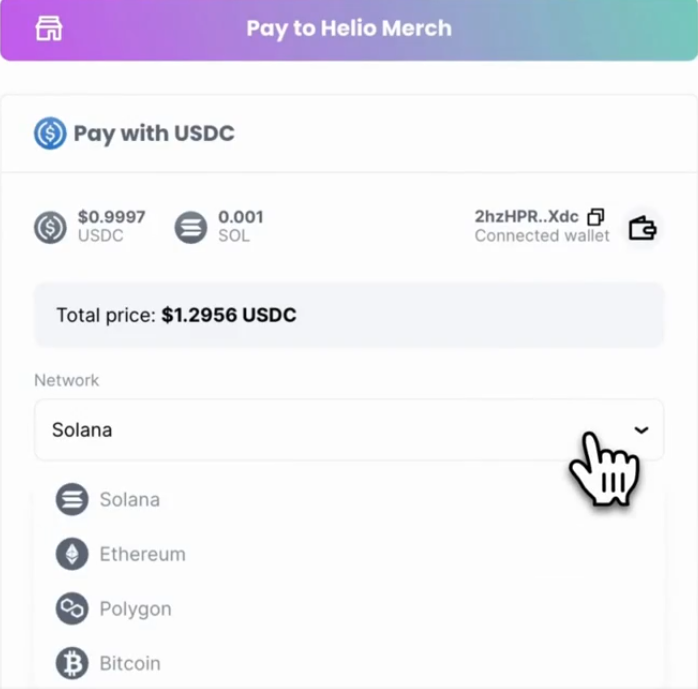-
Solana Pay works to receive and send decentralized payments, without intermediaries.
-
Traders could take advantage of the adoption of BTC and ETH, along with the speed of Solana.
Solana Pay, a Cryptocurrency payment solution for merchants, announced yesterday, November 5, 2024, that it has expanded its support to include Bitcoin (BTC), Ethereum (ETH), and second layer (L2) solutions.
Its new “multichain” feature aims to offer greater flexibility to merchants, now allowing them to receive payments in bitcoin (BTC) and ether (ETH), the cryptoassets with the highest market capitalization. In addition, merchants will also be able to receive tokens on second layer networks.
That is, through this application, merchants could combine the adoption of bitcoin and etherwith the speed and low transactions that the network offers Solarium.
Currently, according to the on-chain analysis site Artemisthe average fees paid by users per transaction on the Solana network is $0.056. In turn, this network reflects an average of 2,000 transactions per second in each processed block.
According to the release From Helio, the company behind Solana Pay, this platform already has “more than 1,000 merchants around the world on Shopify generating millions (of dollars) in cryptocurrency payments.” Solana Pay works within Shopify, an e-commerce platform.


Solana Pay now allows merchants to accept payments in BTC and ether. Fountain: x.
What is Solana Pay and how does it work?
Solana Pay It is a peer-to-peer decentralized payment gateway. A payment gateway is a service that facilitates the transfer of funds between the buyer and seller during an online transaction. It acts as an intermediary that processes payment information.
Merchants set up a Solana-compatible wallet and integrate with Solana Pay using the API (Application Programming Interface, for its acronym in English). These APIs make it easy to integrate functions from one application to another.
When a customer wants to make a payment in bitcoin either ether, Solana Pay generates a QR code that the client can scan with their cryptocurrency wallet. The QR code contains the information necessary to carry out the transaction, such as the amount of the operation and the recipient.
Once the transaction is validated, it is recorded on the Solana network and both the merchant and the customer receive a confirmation. Some of the wallets that Solana Pay supports include Phantom, Solflare and Glow.
While Solana remains the app’s default network, taking advantage of its speed and efficiency features, Solana Pay expands its reach, integrating bitcoin and ether for payments. With its new multichain functionality, Solana Pay allows users to pay with multiple cryptocurrencies even though the transaction is processed in Solana. This multichain support makes it easy for customers to use the cryptocurrency of their choice without the need to convert it manually (only a QR code will need to be scanned).
This translates into a less complex process requiring technical knowledge, different than if the user natively used the Solana network to send payments with cryptocurrencies.
Natively, Solana only allows transactions with Solana tokens and other Solana-based assets (SPL tokens), unlike Solana Pay. To receive bitcoin (BTC) or ether (ETH) natively, the user would have to go through a cryptocurrency exchange or bridge. Cross-chain transactions would be inevitable.
Crypto Keynote USA
For the Latest Crypto News, Follow ©KeynoteUSA on Twitter Or Google News.







